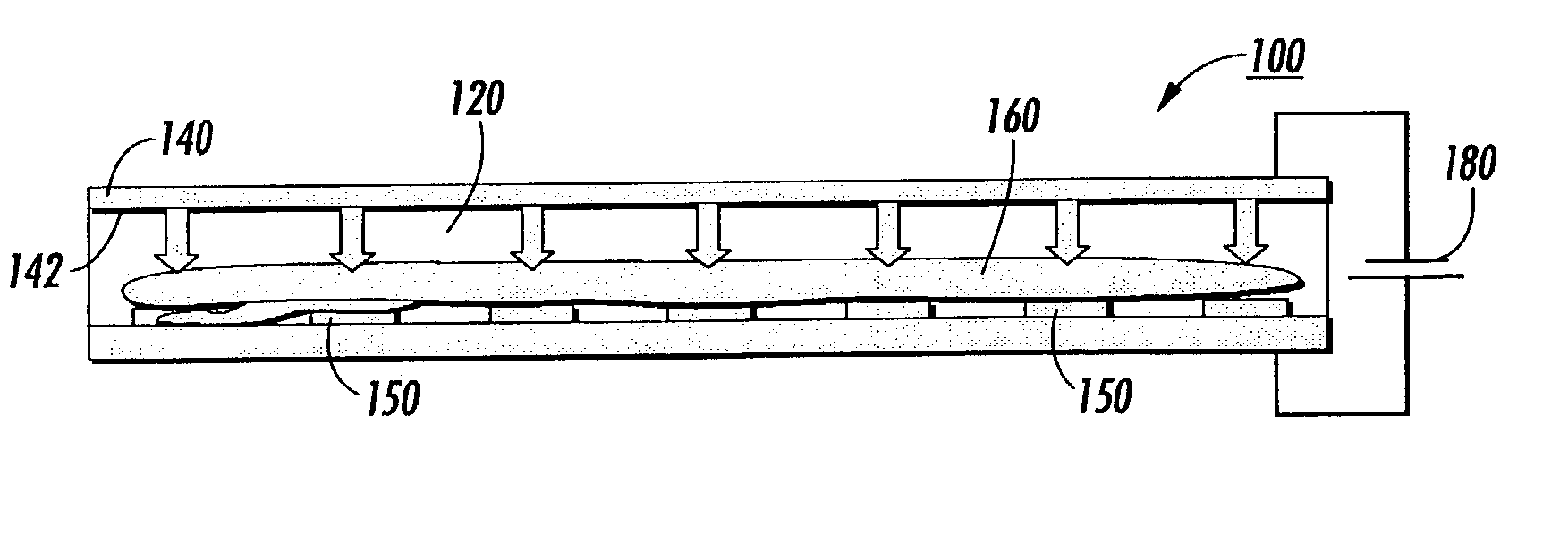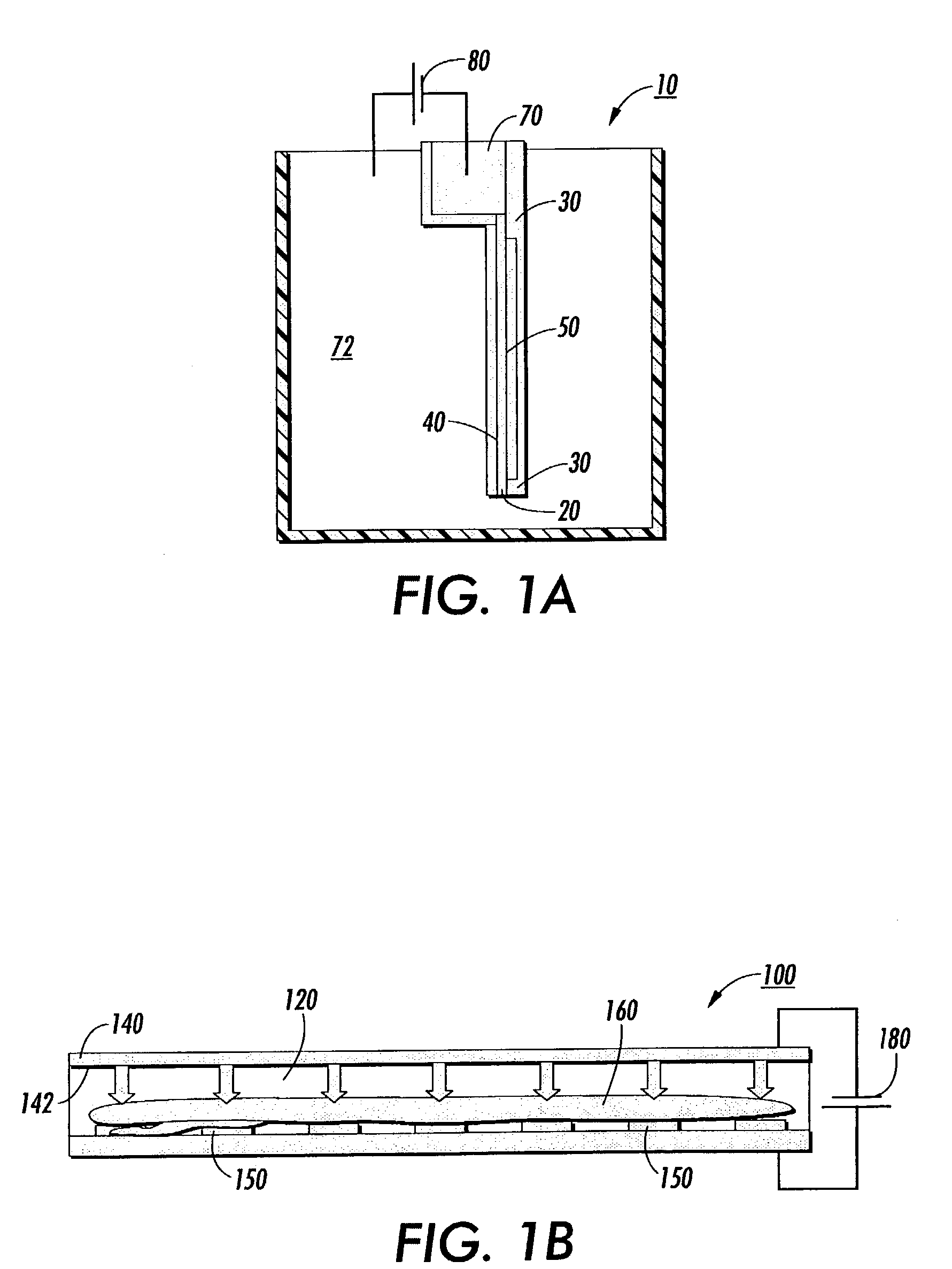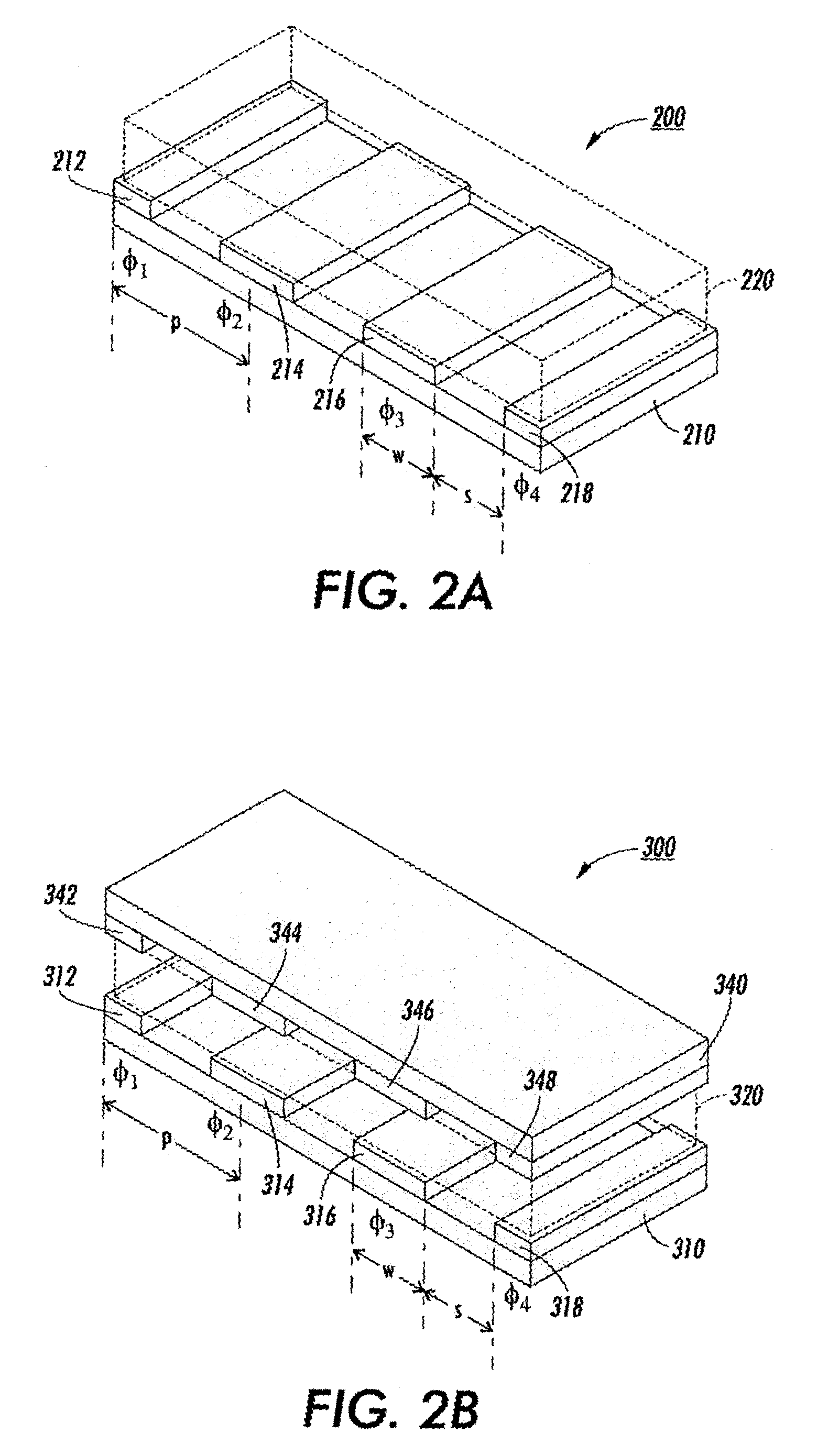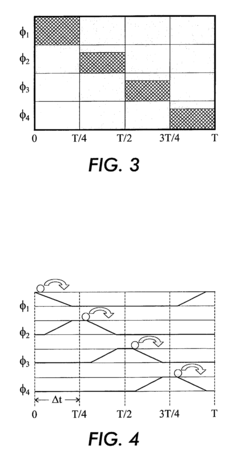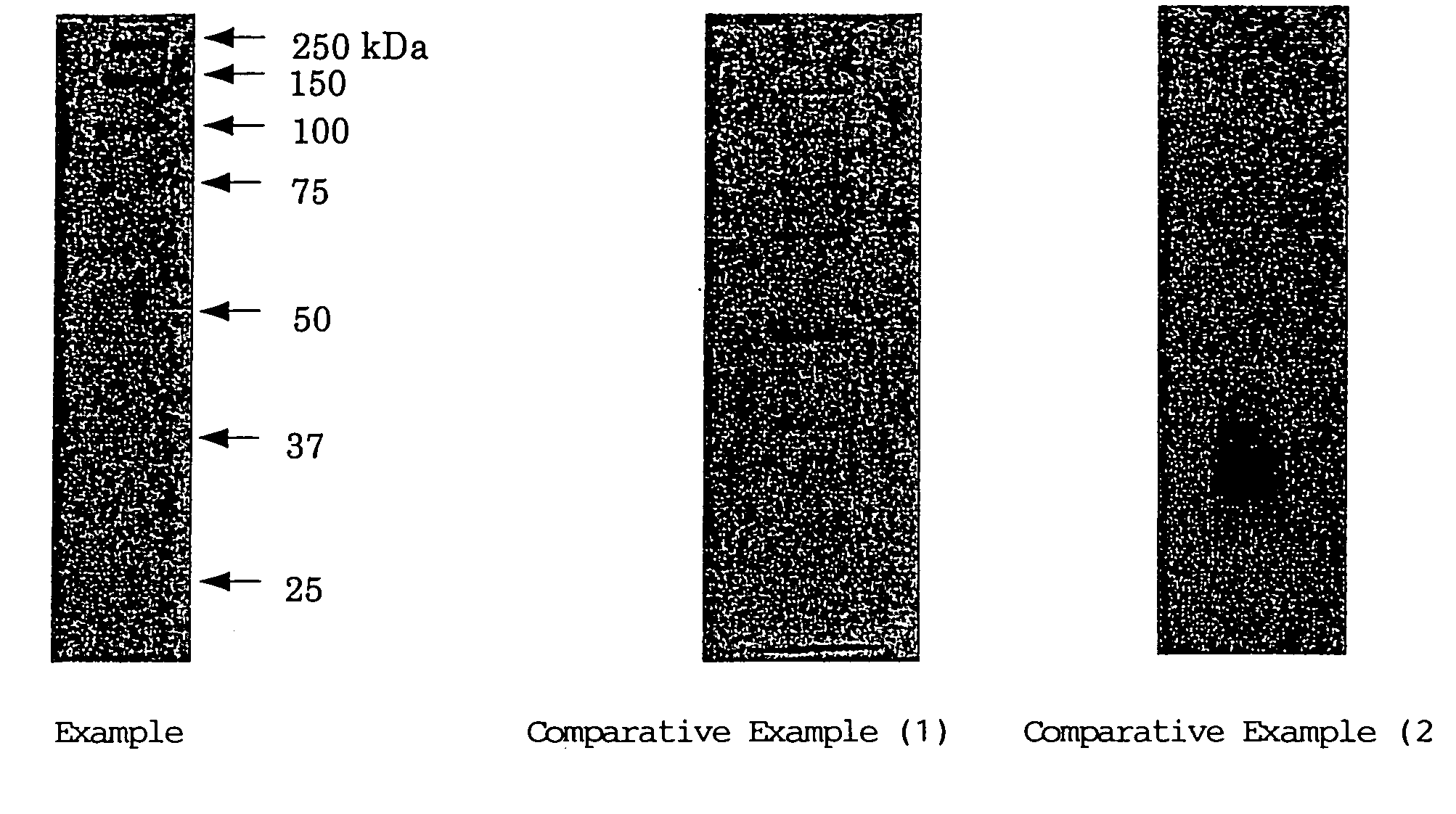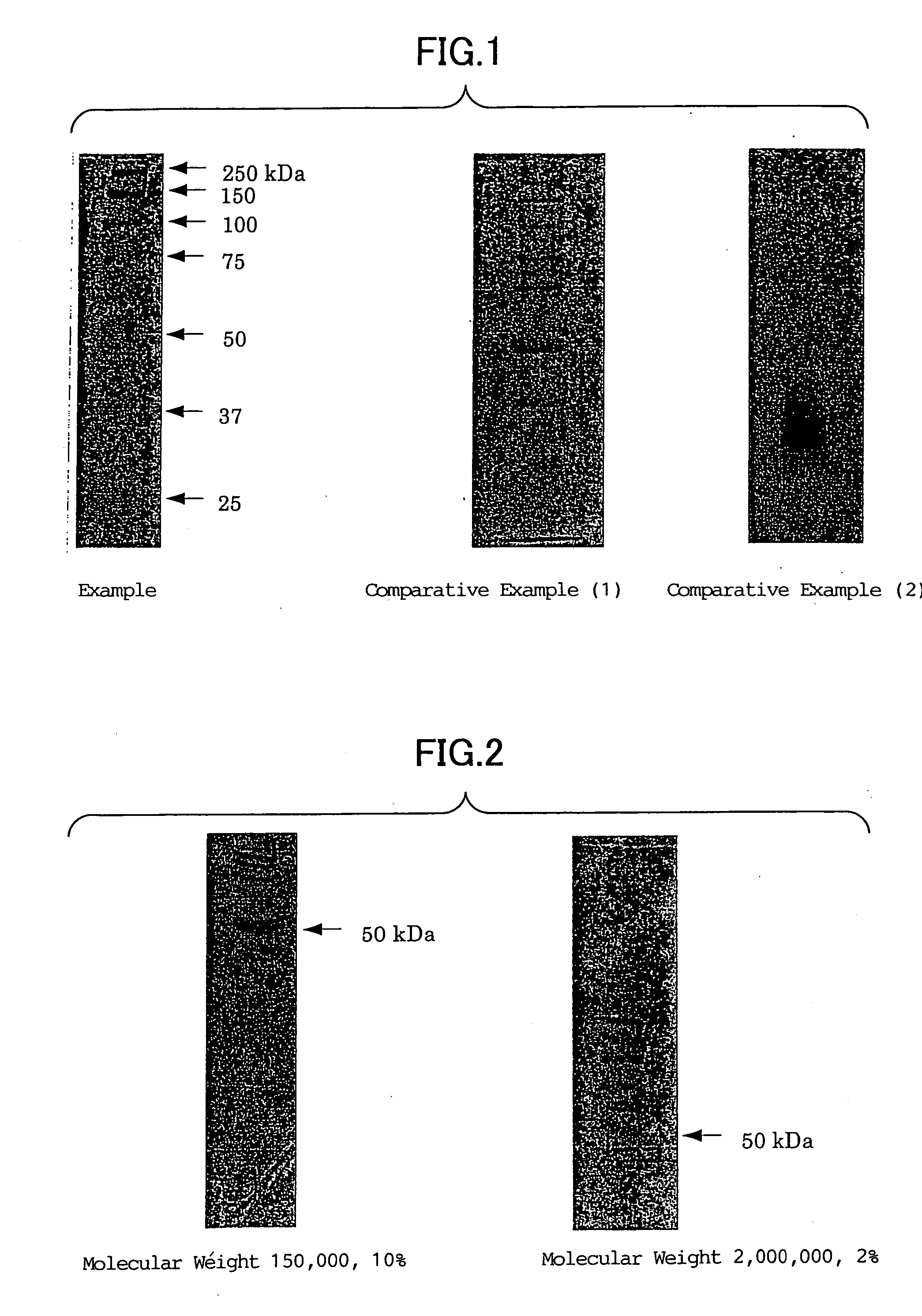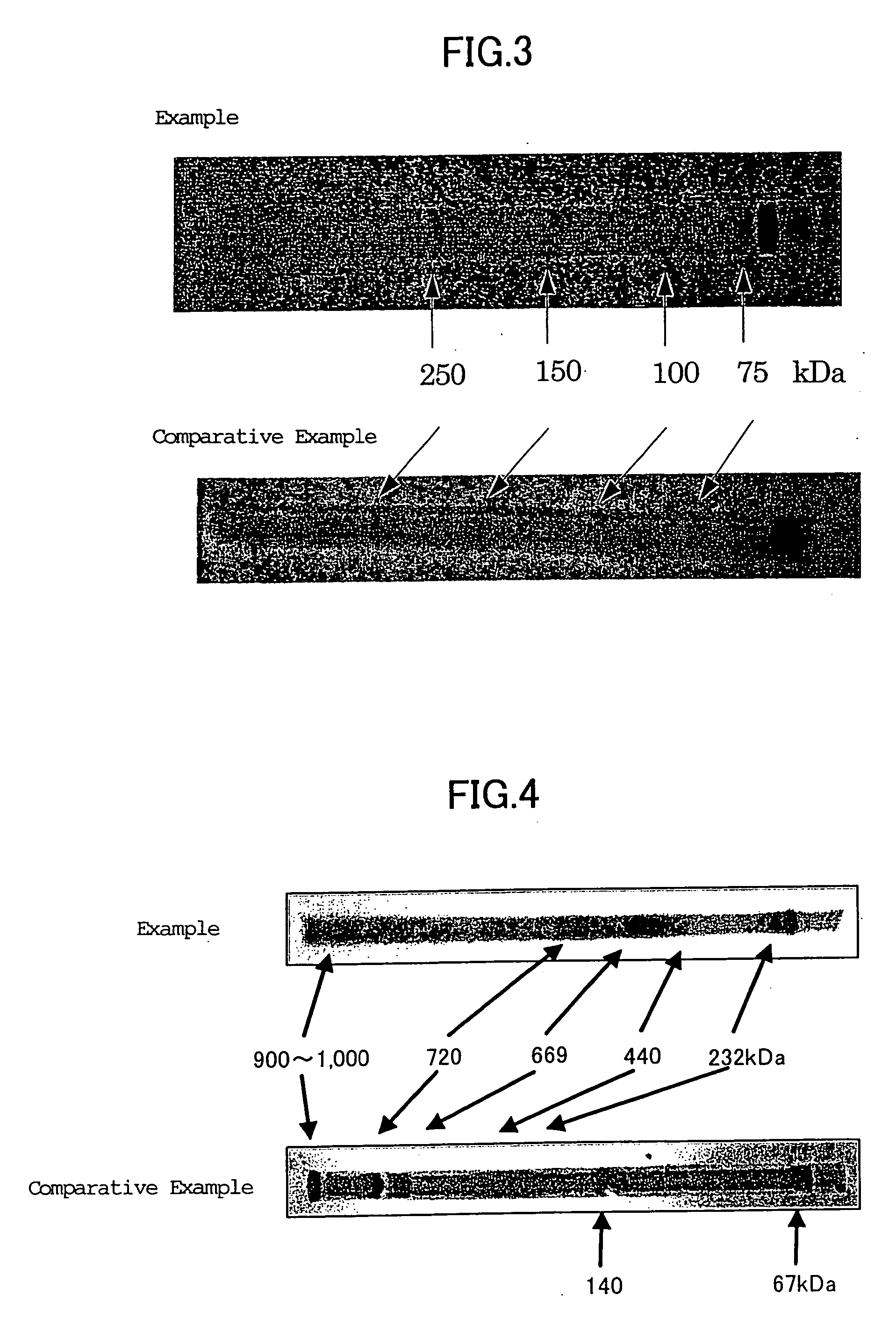Gel Electrophoresis in Microbiology: Innovative Uses
JUN 30, 20259 MIN READ
Generate Your Research Report Instantly with AI Agent
Patsnap Eureka helps you evaluate technical feasibility & market potential.
Gel Electrophoresis Evolution and Objectives
Gel electrophoresis has been a cornerstone technique in microbiology since its inception in the 1930s. Initially developed for protein separation, it has evolved significantly over the decades to become an indispensable tool in molecular biology and microbial research. The technique's fundamental principle, leveraging the differential migration of charged molecules through a gel matrix under an electric field, has remained constant, while its applications have expanded dramatically.
The evolution of gel electrophoresis in microbiology can be traced through several key milestones. In the 1950s, the introduction of polyacrylamide gels revolutionized protein separation, offering higher resolution than earlier starch gels. The 1970s saw the advent of agarose gel electrophoresis for DNA separation, a breakthrough that coincided with the rise of recombinant DNA technology. This synergy propelled gel electrophoresis to the forefront of genetic research and microbial characterization.
Subsequent decades brought refinements and innovations, such as pulsed-field gel electrophoresis (PFGE) in the 1980s, which enabled the separation of large DNA molecules and became crucial for bacterial genome analysis. The 1990s and 2000s witnessed the integration of gel electrophoresis with other techniques, like Western blotting and PCR, further expanding its utility in microbiology.
The objectives of gel electrophoresis in modern microbiology are multifaceted. Primarily, it serves as a powerful analytical tool for the separation, identification, and characterization of microbial macromolecules. This includes DNA fragment analysis for genetic studies, protein profiling for functional genomics, and the study of microbial diversity through techniques like DGGE (Denaturing Gradient Gel Electrophoresis).
Moreover, gel electrophoresis aims to provide high-resolution separation of complex biological mixtures, enabling researchers to isolate specific molecules of interest. In microbial diagnostics, it plays a crucial role in strain typing and epidemiological studies, helping to track the spread of pathogens and identify outbreak sources.
Looking forward, the objectives of gel electrophoresis in microbiology continue to evolve. There is a growing emphasis on developing more sensitive, high-throughput, and miniaturized systems to meet the demands of modern microbial research. Innovations in gel materials, detection methods, and integration with other analytical techniques are ongoing, with the goal of enhancing resolution, speed, and the ability to analyze increasingly complex microbial samples.
The evolution of gel electrophoresis in microbiology can be traced through several key milestones. In the 1950s, the introduction of polyacrylamide gels revolutionized protein separation, offering higher resolution than earlier starch gels. The 1970s saw the advent of agarose gel electrophoresis for DNA separation, a breakthrough that coincided with the rise of recombinant DNA technology. This synergy propelled gel electrophoresis to the forefront of genetic research and microbial characterization.
Subsequent decades brought refinements and innovations, such as pulsed-field gel electrophoresis (PFGE) in the 1980s, which enabled the separation of large DNA molecules and became crucial for bacterial genome analysis. The 1990s and 2000s witnessed the integration of gel electrophoresis with other techniques, like Western blotting and PCR, further expanding its utility in microbiology.
The objectives of gel electrophoresis in modern microbiology are multifaceted. Primarily, it serves as a powerful analytical tool for the separation, identification, and characterization of microbial macromolecules. This includes DNA fragment analysis for genetic studies, protein profiling for functional genomics, and the study of microbial diversity through techniques like DGGE (Denaturing Gradient Gel Electrophoresis).
Moreover, gel electrophoresis aims to provide high-resolution separation of complex biological mixtures, enabling researchers to isolate specific molecules of interest. In microbial diagnostics, it plays a crucial role in strain typing and epidemiological studies, helping to track the spread of pathogens and identify outbreak sources.
Looking forward, the objectives of gel electrophoresis in microbiology continue to evolve. There is a growing emphasis on developing more sensitive, high-throughput, and miniaturized systems to meet the demands of modern microbial research. Innovations in gel materials, detection methods, and integration with other analytical techniques are ongoing, with the goal of enhancing resolution, speed, and the ability to analyze increasingly complex microbial samples.
Microbiology Market Demand Analysis
The microbiology market has experienced significant growth in recent years, driven by increasing demand for advanced diagnostic techniques and research tools. Gel electrophoresis, a fundamental technique in molecular biology, has found innovative applications in microbiology, contributing to this market expansion. The global microbiology market size was valued at approximately $9.8 billion in 2020 and is projected to reach $15.7 billion by 2028, growing at a CAGR of 6.5% during the forecast period.
The demand for gel electrophoresis in microbiology is primarily fueled by its versatility in various applications, including pathogen detection, genetic analysis of microorganisms, and antimicrobial resistance studies. In the clinical diagnostics sector, there is a growing need for rapid and accurate identification of microbial pathogens, driving the adoption of gel electrophoresis techniques. The COVID-19 pandemic has further accelerated this trend, highlighting the importance of efficient molecular diagnostic tools in managing infectious diseases.
In the pharmaceutical and biotechnology industries, gel electrophoresis plays a crucial role in microbial strain development and quality control processes. The increasing focus on personalized medicine and biopharmaceuticals has created new opportunities for gel electrophoresis applications in microbiology. Additionally, the food and beverage industry is adopting gel electrophoresis techniques for microbial contamination testing, contributing to market growth.
Academic and research institutions continue to be significant consumers of gel electrophoresis products for microbiology applications. The rising investments in life sciences research and the growing number of collaborations between academia and industry are driving the demand for advanced gel electrophoresis systems and consumables.
Geographically, North America holds the largest share of the microbiology market, followed by Europe and Asia-Pacific. However, emerging economies in Asia-Pacific and Latin America are expected to witness the highest growth rates in the coming years, driven by increasing healthcare expenditure and expanding biotechnology sectors.
The market demand for innovative gel electrophoresis applications in microbiology is also influenced by technological advancements. There is a growing interest in miniaturized and automated gel electrophoresis systems that offer higher throughput and improved resolution. Furthermore, the integration of gel electrophoresis with other analytical techniques, such as mass spectrometry, is opening new avenues for comprehensive microbial analysis.
In conclusion, the market demand for innovative uses of gel electrophoresis in microbiology is robust and expected to continue growing. The technique's versatility, coupled with advancements in technology and increasing applications across various industries, positions gel electrophoresis as a critical tool in the evolving landscape of microbiology research and diagnostics.
The demand for gel electrophoresis in microbiology is primarily fueled by its versatility in various applications, including pathogen detection, genetic analysis of microorganisms, and antimicrobial resistance studies. In the clinical diagnostics sector, there is a growing need for rapid and accurate identification of microbial pathogens, driving the adoption of gel electrophoresis techniques. The COVID-19 pandemic has further accelerated this trend, highlighting the importance of efficient molecular diagnostic tools in managing infectious diseases.
In the pharmaceutical and biotechnology industries, gel electrophoresis plays a crucial role in microbial strain development and quality control processes. The increasing focus on personalized medicine and biopharmaceuticals has created new opportunities for gel electrophoresis applications in microbiology. Additionally, the food and beverage industry is adopting gel electrophoresis techniques for microbial contamination testing, contributing to market growth.
Academic and research institutions continue to be significant consumers of gel electrophoresis products for microbiology applications. The rising investments in life sciences research and the growing number of collaborations between academia and industry are driving the demand for advanced gel electrophoresis systems and consumables.
Geographically, North America holds the largest share of the microbiology market, followed by Europe and Asia-Pacific. However, emerging economies in Asia-Pacific and Latin America are expected to witness the highest growth rates in the coming years, driven by increasing healthcare expenditure and expanding biotechnology sectors.
The market demand for innovative gel electrophoresis applications in microbiology is also influenced by technological advancements. There is a growing interest in miniaturized and automated gel electrophoresis systems that offer higher throughput and improved resolution. Furthermore, the integration of gel electrophoresis with other analytical techniques, such as mass spectrometry, is opening new avenues for comprehensive microbial analysis.
In conclusion, the market demand for innovative uses of gel electrophoresis in microbiology is robust and expected to continue growing. The technique's versatility, coupled with advancements in technology and increasing applications across various industries, positions gel electrophoresis as a critical tool in the evolving landscape of microbiology research and diagnostics.
Current Challenges in Gel Electrophoresis
Gel electrophoresis remains a cornerstone technique in microbiology, yet it faces several challenges that limit its innovative applications. One of the primary issues is the resolution and separation of complex biological samples. As microbiological research delves into more intricate systems, the need for higher resolution separation becomes paramount. Current gel electrophoresis techniques often struggle to distinguish between closely related DNA or protein fragments, particularly in metagenomic studies or when analyzing complex microbial communities.
Another significant challenge is the time-consuming nature of the technique. Traditional gel electrophoresis can take hours to complete, which is a considerable drawback in time-sensitive microbiological applications. This limitation becomes particularly problematic in clinical settings where rapid diagnosis is crucial. The slow process also hinders high-throughput screening applications, which are increasingly important in modern microbiological research and industrial microbiology.
The sensitivity of gel electrophoresis is another area of concern. Detecting low-abundance microbial species or rare genetic variants requires highly sensitive methods. Current gel electrophoresis techniques often fall short in this aspect, necessitating additional, often more complex and expensive, molecular biology techniques to complement the results.
Reproducibility and standardization pose additional challenges. Variations in gel composition, running conditions, and staining procedures can lead to inconsistent results across different laboratories or even within the same lab. This lack of standardization hampers the comparison of results and the establishment of reliable databases, which are crucial for advancing microbiological research and diagnostics.
The limited applicability to certain types of biomolecules is another constraint. While gel electrophoresis works well for DNA and many proteins, it is less effective for certain classes of molecules important in microbiology, such as lipids or small metabolites. This limitation restricts its use in comprehensive studies of microbial physiology and metabolism.
Environmental concerns also present challenges. Traditional gel electrophoresis often involves the use of toxic chemicals, such as ethidium bromide for DNA staining. Finding eco-friendly alternatives that maintain the same level of sensitivity and ease of use is an ongoing challenge in the field.
Lastly, the integration of gel electrophoresis with other analytical techniques remains a significant hurdle. While combining gel electrophoresis with mass spectrometry or sequencing has shown promise, seamless integration that preserves the simplicity and accessibility of gel electrophoresis while enhancing its analytical power is still a work in progress.
Another significant challenge is the time-consuming nature of the technique. Traditional gel electrophoresis can take hours to complete, which is a considerable drawback in time-sensitive microbiological applications. This limitation becomes particularly problematic in clinical settings where rapid diagnosis is crucial. The slow process also hinders high-throughput screening applications, which are increasingly important in modern microbiological research and industrial microbiology.
The sensitivity of gel electrophoresis is another area of concern. Detecting low-abundance microbial species or rare genetic variants requires highly sensitive methods. Current gel electrophoresis techniques often fall short in this aspect, necessitating additional, often more complex and expensive, molecular biology techniques to complement the results.
Reproducibility and standardization pose additional challenges. Variations in gel composition, running conditions, and staining procedures can lead to inconsistent results across different laboratories or even within the same lab. This lack of standardization hampers the comparison of results and the establishment of reliable databases, which are crucial for advancing microbiological research and diagnostics.
The limited applicability to certain types of biomolecules is another constraint. While gel electrophoresis works well for DNA and many proteins, it is less effective for certain classes of molecules important in microbiology, such as lipids or small metabolites. This limitation restricts its use in comprehensive studies of microbial physiology and metabolism.
Environmental concerns also present challenges. Traditional gel electrophoresis often involves the use of toxic chemicals, such as ethidium bromide for DNA staining. Finding eco-friendly alternatives that maintain the same level of sensitivity and ease of use is an ongoing challenge in the field.
Lastly, the integration of gel electrophoresis with other analytical techniques remains a significant hurdle. While combining gel electrophoresis with mass spectrometry or sequencing has shown promise, seamless integration that preserves the simplicity and accessibility of gel electrophoresis while enhancing its analytical power is still a work in progress.
Cutting-edge Gel Electrophoresis Techniques
01 Gel composition and preparation
Gel electrophoresis involves the use of specialized gel compositions. These gels are typically made from materials such as agarose or polyacrylamide. The composition and preparation of these gels are crucial for achieving optimal separation of molecules. Factors such as gel concentration, crosslinking, and additives can be adjusted to enhance resolution and separation efficiency.- Gel composition and preparation: Various gel compositions and preparation methods are used in gel electrophoresis. These include specific formulations of agarose, polyacrylamide, and other polymers to create gels with desired properties for different separation applications. The composition and preparation of the gel matrix are crucial for achieving optimal resolution and separation of molecules.
- Electrophoresis apparatus design: Innovations in electrophoresis apparatus design focus on improving efficiency, reproducibility, and ease of use. These designs may include novel electrode configurations, buffer circulation systems, temperature control mechanisms, and integrated detection systems. Advanced apparatus designs aim to enhance separation quality and increase throughput for various analytical applications.
- Sample loading and separation techniques: Advancements in sample loading and separation techniques for gel electrophoresis include methods for improved sample introduction, pre-concentration, and fractionation. These techniques may involve specialized sample wells, gradient gels, or pulsed-field systems to enhance resolution and separation of complex mixtures of biomolecules.
- Detection and analysis methods: Various detection and analysis methods are employed in gel electrophoresis to visualize and quantify separated molecules. These may include fluorescence-based detection, colorimetric staining, or integration with mass spectrometry. Advanced imaging and data analysis techniques are developed to improve sensitivity, accuracy, and automation of result interpretation.
- Microfluidic and miniaturized systems: Development of microfluidic and miniaturized gel electrophoresis systems aims to reduce sample and reagent consumption, increase throughput, and enable integration with other analytical techniques. These systems may incorporate novel fabrication methods, on-chip gel formation, and integrated detection for rapid and efficient biomolecule analysis.
02 Electrophoresis apparatus design
The design of gel electrophoresis apparatus plays a significant role in the effectiveness of the technique. This includes the configuration of electrodes, buffer chambers, and cooling systems. Innovations in apparatus design focus on improving sample loading, reducing joule heating, and enhancing overall separation performance. Some designs incorporate features for real-time monitoring or automated operation.Expand Specific Solutions03 Buffer systems and running conditions
The choice of buffer system and running conditions greatly influences the outcome of gel electrophoresis. This includes factors such as buffer composition, pH, ionic strength, and applied voltage. Optimizing these parameters can improve resolution, reduce band distortion, and minimize sample degradation. Some techniques involve the use of gradient gels or pulsed-field electrophoresis for enhanced separation of specific molecule types.Expand Specific Solutions04 Sample preparation and loading techniques
Proper sample preparation and loading are essential for successful gel electrophoresis. This involves techniques for concentrating samples, removing interfering substances, and ensuring uniform sample application. Innovations in this area include the development of specialized loading buffers, sample concentration devices, and methods for handling small sample volumes or dilute samples.Expand Specific Solutions05 Detection and analysis methods
Various methods are employed for detecting and analyzing molecules separated by gel electrophoresis. These include staining techniques, fluorescence detection, and immunoblotting. Advanced systems incorporate real-time imaging capabilities or coupling with mass spectrometry for more detailed analysis. Software tools are often used for quantitative analysis of gel images and data interpretation.Expand Specific Solutions
Key Players in Microbiology Tools
The innovative uses of gel electrophoresis in microbiology represent a mature technology with ongoing advancements. The market is in a growth phase, driven by increasing applications in genomics, proteomics, and diagnostics. Key players like Life Technologies Corp., Agilent Technologies, and Bio-Rad Laboratories dominate the field, offering sophisticated systems and consumables. These companies, along with emerging players such as Gene Bio-Application Ltd., are continuously improving the technology's resolution, speed, and automation capabilities. The global market size for gel electrophoresis is substantial, with steady growth projected due to rising demand in research, healthcare, and forensic applications.
Agilent Technologies, Inc.
Technical Solution: Agilent has pioneered several innovative uses of gel electrophoresis in microbiology. Their 2100 Bioanalyzer system utilizes microfluidic technology for on-chip gel electrophoresis, allowing rapid analysis of DNA, RNA, and proteins with minimal sample consumption[4]. For microbial typing, Agilent's 2200 TapeStation system offers automated gel electrophoresis with pre-cast gels, enabling standardized and reproducible results[5]. In the field of proteomics, Agilent's OFFGEL Fractionator combines isoelectric focusing with gel electrophoresis to achieve high-resolution protein separation, crucial for studying microbial proteomes[6]. These technologies have significantly enhanced the speed and precision of microbial characterization and identification.
Strengths: High-throughput capabilities, automation, and integration with other analytical techniques. Weaknesses: Initial investment cost can be high, may require specialized consumables.
Bio-Rad Laboratories, Inc.
Technical Solution: Bio-Rad has developed innovative gel electrophoresis systems for microbiology applications. Their CHEF-DR® III Pulsed Field Electrophoresis System enables separation of large DNA fragments up to 10 Mb, crucial for bacterial genome analysis[1]. They've also introduced the Mini-PROTEAN® Tetra Vertical Electrophoresis Cell, which allows rapid protein separation in as little as 15 minutes[2]. For nucleic acid analysis, Bio-Rad's Experion™ Automated Electrophoresis System combines microfluidics and lab-on-a-chip technology to provide high-resolution separation and quantitation of RNA, DNA, and proteins[3]. These innovations have significantly improved the speed, resolution, and reproducibility of gel electrophoresis in microbiological research.
Strengths: Wide range of specialized systems for different applications, high resolution, and automation capabilities. Weaknesses: Higher cost compared to traditional methods, may require specialized training for optimal use.
Breakthrough Innovations in Separation
Distributed multi-segmented reconfigurable traveling wave grids for separation of proteins in gel electrophoresis
PatentActiveUS7156970B2
Innovation
- The implementation of a gel electrophoretic system utilizing electrostatic traveling waves with embedded traveling wave grids on both sides of the gel, optimized for enhanced protein loading and transport, reduces processing time and band broadening, and improves resolution and reproducibility by creating higher field strengths with lower voltages.
Gel for electrophoresis and method for preparing the same
PatentInactiveUS20050279636A1
Innovation
- A novel gel is developed using water-soluble glucans with β-1,3-glucoside bonds as the main chain and β-1,6-glucoside bonds on side chains, which can be easily controlled for pore size and concentration, allowing for the analysis of a wider range of molecular weights without interfering with detection and enabling higher recovery rates of nucleic acids and proteins.
Biosafety Regulations in Microbiology
Biosafety regulations in microbiology play a crucial role in ensuring the safe handling and manipulation of microorganisms, including those involved in gel electrophoresis experiments. These regulations are designed to protect laboratory personnel, the environment, and the general public from potential hazards associated with microbial research.
In the context of innovative uses of gel electrophoresis in microbiology, biosafety regulations are particularly important due to the potential exposure to various microorganisms during sample preparation and analysis. Laboratories must adhere to specific containment levels and safety protocols based on the risk assessment of the microorganisms being studied.
The World Health Organization (WHO) and the Centers for Disease Control and Prevention (CDC) have established biosafety levels (BSL) ranging from BSL-1 to BSL-4, with each level corresponding to specific safety measures and laboratory practices. For most gel electrophoresis applications in microbiology, BSL-1 or BSL-2 containment is typically sufficient, depending on the nature of the microorganisms involved.
Key biosafety regulations for gel electrophoresis in microbiology include the use of personal protective equipment (PPE) such as gloves, lab coats, and safety goggles. Proper handling and disposal of biological waste, including contaminated gels and buffers, is essential to prevent environmental contamination and potential exposure to pathogens.
Additionally, biosafety cabinets may be required for certain procedures involving potentially infectious agents. These cabinets provide a controlled environment to minimize the risk of aerosol transmission and protect both the researcher and the samples from contamination.
Proper training and education of laboratory personnel on biosafety protocols and emergency procedures are mandatory. This includes instruction on the safe use of equipment, proper decontamination techniques, and the handling of accidental spills or exposures.
Regulatory bodies such as the Occupational Safety and Health Administration (OSHA) in the United States and similar organizations in other countries enforce compliance with biosafety regulations. Regular inspections and audits are conducted to ensure that laboratories maintain appropriate safety standards and documentation.
As innovative applications of gel electrophoresis in microbiology continue to emerge, it is crucial for researchers to stay updated on evolving biosafety regulations. This includes adapting safety protocols to accommodate new techniques or modifications to existing methods, ensuring that safety measures keep pace with scientific advancements.
In the context of innovative uses of gel electrophoresis in microbiology, biosafety regulations are particularly important due to the potential exposure to various microorganisms during sample preparation and analysis. Laboratories must adhere to specific containment levels and safety protocols based on the risk assessment of the microorganisms being studied.
The World Health Organization (WHO) and the Centers for Disease Control and Prevention (CDC) have established biosafety levels (BSL) ranging from BSL-1 to BSL-4, with each level corresponding to specific safety measures and laboratory practices. For most gel electrophoresis applications in microbiology, BSL-1 or BSL-2 containment is typically sufficient, depending on the nature of the microorganisms involved.
Key biosafety regulations for gel electrophoresis in microbiology include the use of personal protective equipment (PPE) such as gloves, lab coats, and safety goggles. Proper handling and disposal of biological waste, including contaminated gels and buffers, is essential to prevent environmental contamination and potential exposure to pathogens.
Additionally, biosafety cabinets may be required for certain procedures involving potentially infectious agents. These cabinets provide a controlled environment to minimize the risk of aerosol transmission and protect both the researcher and the samples from contamination.
Proper training and education of laboratory personnel on biosafety protocols and emergency procedures are mandatory. This includes instruction on the safe use of equipment, proper decontamination techniques, and the handling of accidental spills or exposures.
Regulatory bodies such as the Occupational Safety and Health Administration (OSHA) in the United States and similar organizations in other countries enforce compliance with biosafety regulations. Regular inspections and audits are conducted to ensure that laboratories maintain appropriate safety standards and documentation.
As innovative applications of gel electrophoresis in microbiology continue to emerge, it is crucial for researchers to stay updated on evolving biosafety regulations. This includes adapting safety protocols to accommodate new techniques or modifications to existing methods, ensuring that safety measures keep pace with scientific advancements.
Interdisciplinary Applications
Gel electrophoresis, a cornerstone technique in microbiology, has found innovative applications across various scientific disciplines. In the field of environmental science, researchers have adapted this method to analyze microbial communities in soil and water samples. By separating DNA fragments from different microorganisms, scientists can assess biodiversity and monitor ecosystem health with unprecedented precision.
In forensic science, gel electrophoresis has revolutionized the analysis of biological evidence. Microbiologists collaborate with forensic experts to identify bacterial or fungal species present at crime scenes, providing crucial information for investigations. This interdisciplinary approach has enhanced the accuracy of forensic microbiology and contributed to solving complex cases.
The food industry has also benefited from innovative applications of gel electrophoresis in microbiology. Food safety experts use this technique to detect and identify foodborne pathogens quickly and accurately. By combining gel electrophoresis with other molecular methods, researchers have developed rapid screening tools for quality control in food production, ensuring consumer safety and reducing the risk of outbreaks.
In the realm of biotechnology, gel electrophoresis has become an essential tool for genetic engineering and synthetic biology. Microbiologists working in this field use the technique to verify the success of gene insertions, deletions, or modifications in engineered microorganisms. This application has accelerated the development of novel biofuels, bioplastics, and other sustainable materials produced by genetically modified bacteria.
The medical field has seen significant advancements through the integration of gel electrophoresis in microbiological research. In particular, the technique has been instrumental in studying antibiotic resistance mechanisms in pathogenic bacteria. By separating and analyzing plasmids carrying resistance genes, researchers can track the spread of antibiotic resistance and develop targeted strategies to combat this global health threat.
In agriculture, gel electrophoresis has found applications in studying plant-microbe interactions. Microbiologists collaborate with agronomists to analyze the genetic diversity of beneficial soil bacteria and fungi. This interdisciplinary approach has led to the development of more effective biofertilizers and biopesticides, promoting sustainable agricultural practices and reducing reliance on chemical inputs.
In forensic science, gel electrophoresis has revolutionized the analysis of biological evidence. Microbiologists collaborate with forensic experts to identify bacterial or fungal species present at crime scenes, providing crucial information for investigations. This interdisciplinary approach has enhanced the accuracy of forensic microbiology and contributed to solving complex cases.
The food industry has also benefited from innovative applications of gel electrophoresis in microbiology. Food safety experts use this technique to detect and identify foodborne pathogens quickly and accurately. By combining gel electrophoresis with other molecular methods, researchers have developed rapid screening tools for quality control in food production, ensuring consumer safety and reducing the risk of outbreaks.
In the realm of biotechnology, gel electrophoresis has become an essential tool for genetic engineering and synthetic biology. Microbiologists working in this field use the technique to verify the success of gene insertions, deletions, or modifications in engineered microorganisms. This application has accelerated the development of novel biofuels, bioplastics, and other sustainable materials produced by genetically modified bacteria.
The medical field has seen significant advancements through the integration of gel electrophoresis in microbiological research. In particular, the technique has been instrumental in studying antibiotic resistance mechanisms in pathogenic bacteria. By separating and analyzing plasmids carrying resistance genes, researchers can track the spread of antibiotic resistance and develop targeted strategies to combat this global health threat.
In agriculture, gel electrophoresis has found applications in studying plant-microbe interactions. Microbiologists collaborate with agronomists to analyze the genetic diversity of beneficial soil bacteria and fungi. This interdisciplinary approach has led to the development of more effective biofertilizers and biopesticides, promoting sustainable agricultural practices and reducing reliance on chemical inputs.
Unlock deeper insights with Patsnap Eureka Quick Research — get a full tech report to explore trends and direct your research. Try now!
Generate Your Research Report Instantly with AI Agent
Supercharge your innovation with Patsnap Eureka AI Agent Platform!
